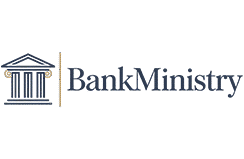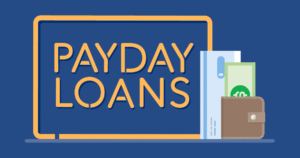Introduction to Checking vs Savings Accounts Comparison
In the United States, managing personal finances effectively often begins with understanding the tools at your disposal, particularly checking accounts and savings accounts. These two types of bank accounts serve distinct purposes, yet they are complementary in helping you achieve financial stability. Whether you’re paying bills, saving for a vacation, or building an emergency fund, choosing the right account—or combination of accounts—can make a significant difference. This comprehensive checking vs savings account comparison will guide you through their differences, benefits, and practical applications, ensuring you make informed decisions tailored to your financial needs in 2025.
The question at the heart of this guide is simple: What’s the difference between a checking and savings account, and how can I use them effectively? To answer, we’ll explore the core functions, features, fees, interest rates, and strategic uses of both accounts, drawing on insights from trusted sources like NerdWallet (April 16, 2025), Bank of America (November 8, 2024), and Santander Bank (November 26, 2020). By the end, you’ll have a clear understanding of how to leverage these accounts to meet your financial goals, avoid common pitfalls, and optimize your banking experience in the USA.
What Are Checking and Savings Accounts?
Defining Checking Accounts
A checking account is a bank account designed for frequent transactions and everyday financial activities. Think of it as your financial hub—a place where money flows in and out regularly to cover expenses like rent, groceries, utilities, or dining out. Checking accounts are built for accessibility, offering multiple ways to access your funds, including:
- Debit cards for purchases and ATM withdrawals.
- Checks for payments like rent or bills.
- Online and mobile banking for transfers, bill payments, or peer-to-peer services like Zelle®.
- Direct deposits for paychecks or government benefits.
Checking accounts are highly liquid, meaning you can access your money whenever you need it without restrictions on the number of transactions. However, this convenience often comes with trade-offs, such as minimal or no interest earnings and potential fees for maintenance, overdrafts, or out-of-network ATM use.
Defining Savings Accounts
A savings account, on the other hand, is designed for storing money you don’t need immediately, with the goal of earning interest over time. Picture it as a safe where your money grows slowly while remaining secure. Savings accounts are ideal for:
- Building an emergency fund (typically 3-6 months of living expenses).
- Saving for short-term goals, like a vacation, wedding, or down payment on a car.
- Teaching financial literacy, especially through youth savings accounts for children.
Savings accounts are less liquid than checking accounts, often limiting withdrawals to six per month (though federal restrictions on this limit were lifted in 2020, some banks still enforce it). They typically offer higher interest rates than checking accounts, particularly with high-yield savings accounts available at online banks, which can provide annual percentage yields (APYs) up to 4.66% as of July 2025, according to NerdWallet.
Why Understanding the Difference Matters
Choosing between a checking and savings account—or using both effectively—can impact your financial health. A checking account keeps your money accessible for daily needs, while a savings account helps it grow for future goals. Misusing these accounts (e.g., keeping too much in a non-interest-bearing checking account or frequently dipping into savings) can lead to missed opportunities or unnecessary fees. By understanding their roles, you can align your banking strategy with your lifestyle, whether you’re a young professional in New York, a retiree in Florida, or a family saving for a home in Texas.
Key Differences Between Checking and Savings Accounts
To make an informed decision, let’s break down the key differences between checking and savings accounts across several dimensions: accessibility, interest rates, fees, and intended use.
Accessibility and Transaction Flexibility
- Checking Accounts: Offer unlimited transactions, making them ideal for frequent use. You can withdraw cash, pay bills, or transfer money multiple times a day without restrictions. For example, Bank of America’s Advantage Plus Checking allows seamless transactions via debit cards, Zelle®, or mobile banking, as noted in their November 2024 article.
- Savings Accounts: Limit withdrawals to encourage saving. Santander Bank, for instance, caps savings account withdrawals at six per Service Fee Period, with excessive withdrawals potentially leading to fees or account conversion (November 2020). Online transfers or ATM withdrawals are common, but check-writing is rare unless it’s a money market savings account.
Analogy: Think of a checking account as a wallet you carry daily, always ready for quick purchases. A savings account is like a locked safe at home—you can access it, but it takes more effort, encouraging you to leave the money untouched.
Interest Rates and Earnings Potential
- Checking Accounts: Rarely earn significant interest. Most traditional checking accounts, like Santander’s Simply Right® Checking (0.01% APY), offer minimal or no interest, as their primary function is transactional, not growth-oriented.
- Savings Accounts: Designed to earn interest, though rates vary. Traditional banks like Bank of America (0.01%-0.04% APY for Advantage Savings) and Santander (minimal APY) offer low rates, while high-yield savings accounts at online banks (e.g., Ally, Marcus) can reach 4.66% APY, per NerdWallet’s July 2025 data.
Example: If you deposit $10,000 in a Bank of America Advantage Savings account at 0.01% APY, you’d earn about $1 in interest annually. In a high-yield savings account at 4.66% APY, that same $10,000 would earn approximately $466 per year—a significant difference.
Fees and Costs
- Checking Accounts: Often have monthly maintenance fees (e.g., $12 for Bank of America’s Advantage Plus Checking, $10 for Santander’s Simply Right® Checking), overdraft fees ($35 at Bank of America, $15 at Santander for overdrafts over $100), and out-of-network ATM fees ($2.50-$5). Fees can often be waived by maintaining a minimum balance, setting up direct deposits, or enrolling in rewards programs.
- Savings Accounts: Typically have lower fees. Santander’s Savings account has a $1 monthly fee (waivable with a $100 balance or linked checking account), while Bank of America’s Advantage Savings charges $8 (waivable with a $500 balance or Preferred Rewards). Excessive withdrawal fees may apply if you exceed transaction limits.
Practical Tip: Linking a checking and savings account at the same bank can often waive fees. For example, Santander waives the savings account fee if linked to a checking account, saving you $12 annually.
Intended Use and Financial Goals
- Checking Accounts: Best for managing daily expenses, such as groceries, utilities, or subscriptions like Netflix. They’re your go-to for immediate financial needs.
- Savings Accounts: Suited for long-term goals or emergency funds. For instance, saving $500 monthly in a high-yield savings account at 4.5% APY could grow to over $6,300 in a year, including interest, compared to just $6,000 in a checking account with no interest.
Real-World Scenario: A single parent in Chicago might use a checking account to pay for childcare and groceries while allocating $200 monthly to a savings account for their child’s college fund. Over time, the savings account’s interest compounds, helping the fund grow faster.
How to Choose the Right Account for Your Needs
Choosing between a checking and savings account depends on your financial habits, goals, and lifestyle. Here’s a step-by-step guide to help you decide, tailored to common scenarios in the USA.
Step 1: Assess Your Financial Needs
- Daily Spending: If you need an account for frequent transactions (e.g., paying rent in Los Angeles, buying groceries in Atlanta, or dining out in Seattle), a checking account is essential. Look for accounts with low or no fees, like Santander’s Simply Right® Checking, which waives its $10 fee with just one transaction per month.
- Saving Goals: If you’re saving for a specific goal—such as a $5,000 emergency fund or a $20,000 down payment for a home in Dallas—a savings account is better. High-yield savings accounts from online banks are ideal for maximizing interest.
- Both: Most Americans benefit from having both accounts. For example, a freelancer in Miami might deposit client payments into a checking account for bills and transfer 10% of each payment to a savings account for taxes or retirement.
Step 2: Compare Fees and Requirements
- Fee Waivers: Check if you can meet fee waiver conditions. Bank of America waives its $12 checking fee with $250 in monthly direct deposits or a $1,500 minimum balance. Santander’s $1 savings fee is waived with a $100 balance or linked checking account.
- Minimum Balances: Some accounts require high minimum balances to avoid fees, which may not suit everyone. For instance, Santander’s Money Market Savings may require a $10,000 balance for higher interest rates, per related sources.
- Overdraft Protection: Linking a savings account to a checking account can prevent costly overdraft fees. Bank of America’s Balance Connect® transfers funds from savings to cover overdrafts, though it may incur a $12 transfer fee.
Step 3: Evaluate Interest Rates
- Traditional Banks: Offer low savings rates (0.01%-0.04% APY at Bank of America, 0.01% at Santander). These are suitable for convenience but not for maximizing returns.
- Online Banks: High-yield savings accounts (e.g., Ally, Marcus, Capital One) offer APYs up to 4.66%, as noted by NerdWallet. These are ideal for savers who don’t need frequent branch access.
- Checking Accounts: Rarely offer competitive interest. If you want an interest-bearing checking account, consider premium options like Santander Select® Checking (0.01% APY) or explore online banks with interest-bearing checking accounts.
Step 4: Consider Digital and Branch Access
- Digital Banking: All three sources (NerdWallet, Bank of America, Santander) emphasize robust online and mobile banking. Santander’s Mobile Banking App, rated highly in 2020, supports mobile check deposits and alerts. Bank of America offers Zelle® and digital statements. Online banks often provide superior digital interfaces but lack physical branches.
- Branch Access: If you prefer in-person banking, traditional banks like Santander (Northeast and Miami) or Bank of America (nationwide) are better. For example, a small business owner in Boston might value Santander’s 2,000+ ATMs for cash deposits.
Step 5: Factor in Special Features
- Youth Accounts: Santander’s Youth Savings and Bank of America’s custodial accounts are great for teaching kids financial literacy.
- Savings Tools: Bank of America’s Keep the Change® rounds up debit purchases to transfer to savings, while Santander’s Auto Save automates transfers from checking to savings.
- Promotions: Santander offers a $400 bonus for new checking accounts with $5,000 in direct deposits by December 31, 2024, per their article.
Case Study: Sarah, a 30-year-old teacher in Philadelphia, opens a Santander Simply Right® Checking account for her $3,000 monthly paycheck and a high-yield savings account at Ally (4.5% APY) for her $10,000 emergency fund. She links the accounts to waive the $1 savings fee and sets up Auto Save to transfer $200 monthly to savings. After a year, her savings grows to $12,450, including $450 in interest, while her checking account handles bills and groceries without fees.
Practical Applications of Checking and Savings Accounts
To maximize the benefits of checking and savings accounts, let’s explore practical ways to use them in everyday life, tailored to different demographics in the USA.
For Young Professionals
- Scenario: A 25-year-old software engineer in San Francisco earns $6,000 monthly and wants to manage expenses while saving for a vacation.
- Strategy:
- Open a checking account with no monthly fees (e.g., Capital One 360 Checking, with no minimum balance or fees).
- Deposit $4,500 for monthly expenses (rent, utilities, dining) and transfer $1,500 to a high-yield savings account at Marcus (4.5% APY).
- Use mobile banking to track spending and set savings alerts.
- Outcome: After a year, the savings account grows to $18,675 (including $675 in interest), enough for a dream trip to Hawaii.
For Families
- Scenario: A family of four in Chicago needs to manage household expenses and save for a new car.
- Strategy:
- Use a Bank of America Advantage Plus Checking account for $5,000 monthly expenses, waiving the $12 fee with direct deposits.
- Open a Bank of America Advantage Savings account and enroll in Keep the Change® to save $100 monthly from rounded-up purchases.
- Supplement with a high-yield savings account at Ally for the car fund, depositing $500 monthly.
- Outcome: After 18 months, the high-yield savings account grows to $9,337 (including $337 in interest), while Keep the Change® adds $1,800 to the traditional savings account.
For Retirees
- Scenario: A retiree in Florida lives on a $2,500 monthly pension and wants to maintain liquidity while saving for medical expenses.
- Strategy:
- Open a Santander Simply Right® Checking account for pension deposits and daily expenses, waiving the $10 fee with one transaction.
- Use a Santander® Savings account for an emergency fund, maintaining a $500 balance to waive the $1 fee.
- Keep additional savings in an online high-yield account for higher returns.
- Outcome: The retiree maintains easy access to funds for daily needs while earning modest interest on savings, ensuring financial security.
For Students
- Scenario: A college student in Boston needs an account for part-time job earnings and to start saving.
- Strategy:
- Open a Santander® Youth Savings account (no fee for under 18) to learn saving habits, with a parent as a joint owner.
- Use a fee-free checking account (e.g., Bank of America’s SafeBalance Banking, $4.95 fee waivable for students under 25) for part-time income and expenses.
- Outcome: The student builds a small savings balance while managing tuition or textbook costs without fees.
Broader Context: Banking Trends in the USA (2025)
The banking landscape in 2025 reflects evolving consumer preferences, driven by technology, competition, and economic factors. Here’s how checking and savings accounts fit into broader trends:
Rise of Online Banking
- Trend: Online banks like Ally, Marcus, and Capital One offer high-yield savings accounts with APYs up to 4.66%, far surpassing traditional banks (0.01%-0.04% APY). They also provide fee-free checking accounts with robust digital tools.
- Impact: Consumers seeking higher returns are shifting to online banks, especially for savings. For example, NerdWallet’s July 2025 data highlights online banks as top performers for savings APYs.
- Consideration: If you don’t need branch access, online banks offer better value. However, traditional banks like Santander and Bank of America provide in-person support, which may suit older or less tech-savvy customers.
Digital Banking Features
- Trend: Mobile banking apps, peer-to-peer payment systems (e.g., Zelle®), and automated savings tools are standard. Santander’s Mobile Banking App and Bank of America’s digital platform offer mobile check deposits, alerts, and fraud monitoring.
- Impact: These tools make managing checking and savings accounts easier, reducing the need for branch visits. For instance, a small business owner in New Jersey can deposit checks via Santander’s app, saving time.
- Consideration: Choose banks with highly rated apps if digital convenience is a priority.
Fee Reduction and Promotions
- Trend: Banks compete by offering fee waivers and bonuses. Santander’s $400 checking account bonus (with $5,000 in direct deposits by December 31, 2024) and Bank of America’s Preferred Rewards program are examples.
- Impact: Consumers can save hundreds annually by meeting fee waiver conditions or taking advantage of promotions.
- Consideration: Compare promotional offers but read the fine print for eligibility requirements.
Low Interest Rates at Traditional Banks
- Trend: Traditional banks offer low savings rates (e.g., 0.01% at Santander, 0.04% at Bank of America with Preferred Rewards), while online banks dominate with higher APYs.
- Impact: Savers lose significant earning potential by keeping funds in traditional savings accounts. For example, $20,000 in a Bank of America savings account at 0.01% APY earns $2 annually, versus $932 in a high-yield account at 4.66% APY.
- Consideration: Use traditional banks for convenience and checking, but prioritize online banks for savings.
Safety Precautions and Common Mistakes to Avoid
Using checking and savings accounts effectively requires avoiding common pitfalls. Here are key precautions and mistakes to watch out for:
Safety Precautions
- Protect Account Information: Never share your debit card PIN, online banking credentials, or account numbers. Use strong passwords and enable two-factor authentication for online banking.
- Monitor Accounts Regularly: Set up alerts for transactions, low balances, or suspicious activity. Bank of America and Santander offer real-time fraud monitoring via their apps.
- Understand FDIC Insurance: Both checking and savings accounts are FDIC-insured up to $250,000 per depositor, per account category. Confirm your bank is FDIC-insured to protect your funds.
- Link Accounts for Overdraft Protection: Linking a savings account to your checking account can prevent overdraft fees (e.g., Bank of America’s Balance Connect®), though transfer fees may apply.
Common Mistakes to Avoid
- Keeping Too Much in Checking: Leaving large sums in a non-interest-bearing checking account means missed interest earnings. For example, $15,000 in a checking account at 0% APY earns nothing, while a high-yield savings account could earn $699 annually at 4.66% APY.
- Exceeding Withdrawal Limits: Withdrawing from savings accounts more than six times per month may incur fees or account conversion at banks like Santander. Plan withdrawals carefully.
- Ignoring Fees: Failing to meet fee waiver conditions (e.g., minimum balances, direct deposits) can cost $100-$200 annually. Always review account terms.
- Not Comparing Rates: Sticking with low-yield savings accounts at traditional banks limits growth. Regularly compare APYs using tools like NerdWallet’s account comparisons.
- Overlooking Promotions: Missing out on bonuses like Santander’s $400 offer can reduce your financial benefits. Check for promotions when opening new accounts.
Practical Tip: Review your bank statements monthly to catch unexpected fees or errors. Set calendar reminders to check for promotional deadlines or rate changes.
Comparing Top Banks for Checking and Savings Accounts
To help you choose the best accounts, let’s compare offerings from traditional and online banks based on the analyzed articles and 2025 trends.
Traditional Banks
- Bank of America:
- Checking: Advantage Plus Checking ($12 monthly fee, waivable with $250 direct deposits or $1,500 balance). Features include Zelle®, mobile banking, and Balance Connect® overdraft protection ($12 transfer fee).
- Savings: Advantage Savings (0.01%-0.04% APY, $8 fee waivable with $500 balance or Preferred Rewards). Keep the Change® rounds up purchases for savings.
- Pros: Nationwide branches, robust digital tools, student-friendly accounts.
- Cons: Low savings rates, higher fees compared to online banks.
- Santander Bank:
- Checking: Simply Right® Checking ($10 fee, waivable with one transaction). Offers Zelle®, mobile banking, and a $400 bonus (with $5,000 direct deposits by December 31, 2024).
- Savings: Santander® Savings ($1 fee, waivable with $100 balance or linked checking). Money Market Savings and Youth Savings available.
- Pros: Low savings fees, youth accounts, strong Northeast presence.
- Cons: Limited geographic reach, low interest rates.
Online Banks
- Ally Bank:
- Checking: Interest Checking (0.10%-0.25% APY, no monthly fees). Includes free bill pay, Zelle®, and mobile deposits.
- Savings: High-Yield Savings (4.5% APY, no fees). Features savings buckets for goal tracking.
- Pros: High savings rates, no fees, excellent digital platform.
- Cons: No physical branches, slower customer service for complex issues.
- Marcus by Goldman Sachs:
- Savings: High-Yield Savings (4.66% APY, no fees). No minimum deposit required.
- Pros: Competitive APY, no fees, trusted brand.
- Cons: No checking accounts, limited product range.
Comparison Chart (Hypothetical, based on data):
| Feature | Bank of America | Santander | Ally | Marcus |
| Checking Fee | $12 (waivable) | $10 (waivable) | $0 | N/A |
| Savings APY | 0.01%-0.04% | 0.01% | 4.5% | 4.66% |
| Savings Fee | $8 (waivable) | $1 (waivable) | $0 | $0 |
| Branches | Nationwide | Northeast, FL | None | None |
| Digital Tools | Zelle®, mobile app | Zelle®, Auto Save | Buckets, mobile app | Basic app |
Recommendation: For daily banking with branch access, choose Bank of America or Santander. For maximum savings growth, pair a traditional checking account with an Ally or Marcus high-yield savings account.
Advanced Strategies for Optimizing Checking and Savings Accounts
To take your banking to the next level, consider these advanced strategies, informed by the analyzed articles and tailored for USA consumers.
Automate Savings Transfers
- How: Set up automatic transfers from checking to savings. Santander’s Auto Save and Bank of America’s Keep the Change® automate small, regular contributions.
- Why: Automation builds savings without requiring discipline. For example, transferring $50 weekly to a 4.5% APY savings account yields $2,665 in a year, including $65 in interest.
- Example: A nurse in Denver sets up a $100 monthly transfer to an Ally savings account, growing her emergency fund while focusing on work.
Use Multiple Savings Accounts
- How: Open separate savings accounts for different goals (e.g., emergency fund, vacation, home purchase). Ally’s savings buckets feature simplifies this.
- Why: Separating goals prevents dipping into one fund for another purpose. It also clarifies progress toward each goal.
- Example: A couple in Houston uses one Ally savings account for a $10,000 emergency fund and another for a $5,000 wedding fund, earning 4.5% APY on both.
Leverage Overdraft Protection Wisely
- How: Link a savings account to your checking account for overdraft protection, but monitor transfer fees (e.g., $12 at Bank of America).
- Why: Prevents costly overdraft fees ($35 at Bank of America, $15 at Santander for overdrafts over $100) while maintaining liquidity.
- Example: A freelancer in Miami links a Santander savings account to their checking account, avoiding a $15 overdraft fee when a client payment is delayed.
Maximize Promotional Offers
- How: Open new accounts during promotional periods, like Santander’s $400 checking bonus (expired December 31, 2024, but similar offers may recur).
- Why: Bonuses provide free money for meeting simple conditions, like direct deposits or minimum balances.
- Example: A recent graduate in New York opens a Santander checking account, deposits $5,000 from a new job, and earns a $400 bonus.
Shop for High-Yield Accounts Annually
- How: Compare savings APYs annually using tools like NerdWallet’s account comparisons or Bankrate.
- Why: Interest rates fluctuate, and online banks often adjust rates to stay competitive. Switching to a higher APY can boost earnings significantly.
- Example: Moving $15,000 from a Bank of America savings account (0.01% APY) to Marcus (4.66% APY) increases annual interest from $1.50 to $699.
Frequently Asked Questions
What’s the main difference between a checking and savings account?
Checking accounts are for daily transactions (e.g., paying bills, shopping) with unlimited access but minimal interest. Savings accounts are for long-term saving, offering higher interest (up to 4.66% APY at online banks) but limiting withdrawals to encourage saving.
Can I use a checking account to save money?
While possible, it’s not ideal. Checking accounts typically earn little to no interest, so your money won’t grow. Savings accounts, especially high-yield ones, are better for earning interest on funds you don’t need immediately.
How can I avoid fees on checking and savings accounts?
Choose accounts with low or no fees, like Ally’s Interest Checking or Marcus’ High-Yield Savings. For traditional banks, meet fee waiver conditions, such as maintaining a minimum balance ($1,500 for Bank of America checking) or setting up direct deposits.
Should I use an online bank or a traditional bank?
Online banks offer higher savings APYs (4.5%-4.66%) and no fees but lack branches. Traditional banks like Bank of America or Santander provide in-person support and broader services but have lower rates and potential fees. Use both for convenience and growth.
Disclaimer: This content is for informational purposes only. Always consult a qualified financial professional for banking advice and decisions.



